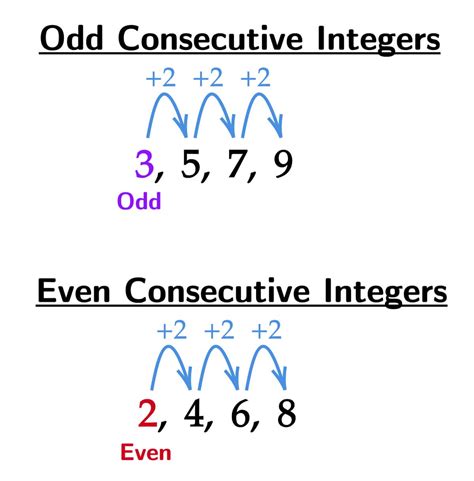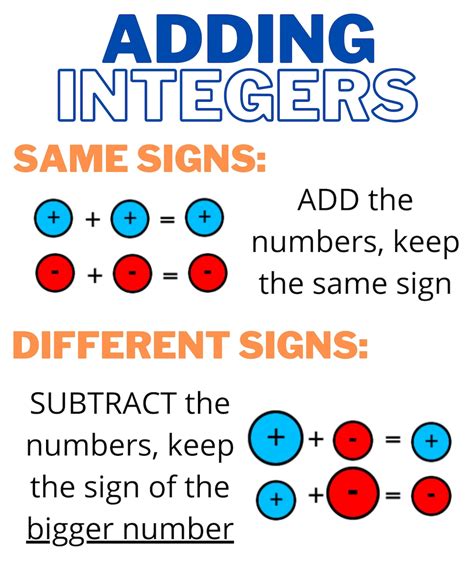
Integer finance is a simplified financial model focusing solely on whole number transactions, omitting fractions or decimals. It operates within a discrete mathematical space, offering advantages in certain contexts while also presenting limitations. The core principle revolves around dealing exclusively with integers for all financial values: amounts, prices, quantities, and rates. This can simplify complex calculations, particularly in educational settings or when modeling basic financial concepts. For instance, illustrating stock transactions where only whole shares can be bought or sold, or demonstrating loan repayments where interest is calculated and applied in whole dollar amounts. One significant benefit of integer finance is its inherent computational efficiency. Integer arithmetic is generally faster and less prone to rounding errors compared to floating-point arithmetic, which is crucial in applications requiring high performance or strict numerical accuracy. This can be beneficial in embedded systems or scenarios with limited computational resources. Furthermore, integer finance offers enhanced transparency and predictability. By eliminating fractional values, the model becomes easier to understand and verify. This is especially valuable in auditing or regulatory compliance where clarity and auditability are paramount. For example, tracking inventory in whole units allows for a precise reconciliation between records and physical stock, reducing discrepancies and potential errors. However, the integer constraint also introduces limitations. Real-world finance often deals with fractional values, such as interest rates, percentage returns, or fractional shares. Modeling these accurately with only integers requires approximations, potentially leading to inaccuracies and distortions. The degree of these errors depends on the scale of the financial operations; in small transactions, the impact may be negligible, while in larger ones, the accumulated rounding errors can become significant. To mitigate the limitations, various techniques can be employed. One approach involves scaling the financial values to a larger integer representation. For instance, expressing prices in cents instead of dollars allows for more precise calculations without resorting to decimals. However, this introduces complexity in data interpretation and requires careful handling to avoid overflow errors in computations. Another strategy is to use integer division with appropriate rounding mechanisms. When calculating interest, for example, the intermediate result might be a fractional value. Applying a rounding rule (e.g., rounding up, rounding down, or rounding to the nearest integer) ensures the final result is an integer while minimizing the overall error. Despite its simplifications, integer finance remains a valuable tool for teaching fundamental financial concepts, prototyping financial models, and developing applications where computational efficiency and transparency are crucial. It's important to recognize both its strengths and weaknesses and choose the appropriate financial model based on the specific requirements of the application. While lacking the precision of floating-point calculations, its simplicity and predictability make it suitable for specific use cases. The key lies in understanding the trade-offs between accuracy and computational efficiency when choosing between integer and floating-point finance.
 2262×1945 basic rules integers from attaituraremylmeguidefix.z13.web.core.windows.net
2262×1945 basic rules integers from attaituraremylmeguidefix.z13.web.core.windows.net
 1024×683 integers definition examples rules from sciencenotes.org
1024×683 integers definition examples rules from sciencenotes.org
 1701×916 integers real world paper from enzainari1zdblearning.z13.web.core.windows.net
1701×916 integers real world paper from enzainari1zdblearning.z13.web.core.windows.net
 1920×1080 integer definition examples from www.pinterest.com
1920×1080 integer definition examples from www.pinterest.com
 1056×600 integers math steps examples questions from thirdspacelearning.com
1056×600 integers math steps examples questions from thirdspacelearning.com
 1200×1220 consecutive integers explained examples matter math from matterofmath.com
1200×1220 consecutive integers explained examples matter math from matterofmath.com
 528×266 integer number video lessons examples solutions from www.onlinemathlearning.com
528×266 integer number video lessons examples solutions from www.onlinemathlearning.com
 850×333 operations integers from www.geeksforgeeks.org
850×333 operations integers from www.geeksforgeeks.org
 1650×1275 understanding adding integers from fantezielgfdblearning.z13.web.core.windows.net
1650×1275 understanding adding integers from fantezielgfdblearning.z13.web.core.windows.net
 1024×768 objectives compare integers find absolute number from slideplayer.com
1024×768 objectives compare integers find absolute number from slideplayer.com
 600×960 negative integers beverly browning blog from storage.googleapis.com
600×960 negative integers beverly browning blog from storage.googleapis.com
 5039×3780 negative positive integers worksheets from lessonfulldisrating.z21.web.core.windows.net
5039×3780 negative positive integers worksheets from lessonfulldisrating.z21.web.core.windows.net
 2400×2880 adding subtracting integers rules chart from ar.inspiredpencil.com
2400×2880 adding subtracting integers rules chart from ar.inspiredpencil.com
 1000×556 adding subtracting integers learn important terms concepts from www.vedantu.com
1000×556 adding subtracting integers learn important terms concepts from www.vedantu.com
 1200×675 integer number types examples from easymathssolution.com
1200×675 integer number types examples from easymathssolution.com
 1536×2048 grade mathematics integers from studyrodstangerkl.z21.web.core.windows.net
1536×2048 grade mathematics integers from studyrodstangerkl.z21.web.core.windows.net
 792×612 definition integer mediamath from www.media4math.com
792×612 definition integer mediamath from www.media4math.com
 1704×802 addition integers number from lessonlibappearance.z22.web.core.windows.net
1704×802 addition integers number from lessonlibappearance.z22.web.core.windows.net
 772×566 examples integer rules from quizzdbaceadorations.z13.web.core.windows.net
772×566 examples integer rules from quizzdbaceadorations.z13.web.core.windows.net
 1224×1584 grade numbers integers assignment from kirilovo0gmdblearning.z14.web.core.windows.net
1224×1584 grade numbers integers assignment from kirilovo0gmdblearning.z14.web.core.windows.net
 1057×600 division integers rules from annemauenlessonmedia.z14.web.core.windows.net
1057×600 division integers rules from annemauenlessonmedia.z14.web.core.windows.net
 1601×986 integers numbers definition symbols types from eduinput.com
1601×986 integers numbers definition symbols types from eduinput.com
 1080×1296 adding integers anchor chart etsy from www.etsy.com
1080×1296 adding integers anchor chart etsy from www.etsy.com
 800×473 subtracting integers signs from learningfenhudasaka.z21.web.core.windows.net
800×473 subtracting integers signs from learningfenhudasaka.z21.web.core.windows.net
 903×1706 subtracting numbers calculator from adaterasui6hlessonmedia.z21.web.core.windows.net
903×1706 subtracting numbers calculator from adaterasui6hlessonmedia.z21.web.core.windows.net
 736×1127 rules integers operations from geibr2sylesson.z21.web.core.windows.net
736×1127 rules integers operations from geibr2sylesson.z21.web.core.windows.net
 2500×1563 types numbers natural integers rational irrational from blackandeducation.org
2500×1563 types numbers natural integers rational irrational from blackandeducation.org
 1020×1700 integer calculation apk android from integer-calculation.en.softonic.com
1020×1700 integer calculation apk android from integer-calculation.en.softonic.com
 600×900 integers worksheets positive negative numbers from homeschoolgiveaways.com
600×900 integers worksheets positive negative numbers from homeschoolgiveaways.com
 1242×1169 subtracting integers rules definition rules examples from testbook.com
1242×1169 subtracting integers rules definition rules examples from testbook.com
 1500×1125 integers rational numbers christinagroclay from christinagroclay.blogspot.com
1500×1125 integers rational numbers christinagroclay from christinagroclay.blogspot.com
 675×557 greatest integer function graph domain range examples en from en.asriportal.com
675×557 greatest integer function graph domain range examples en from en.asriportal.com
 1024×709 manipulating bit fields from slideplayer.com
1024×709 manipulating bit fields from slideplayer.com
 6001×1234 java integer division scaler topics from www.scaler.com
6001×1234 java integer division scaler topics from www.scaler.com
 1685×893 solved scanf read integer input user from www.coursehero.com
1685×893 solved scanf read integer input user from www.coursehero.com
 1024×683 irrational numbers from sciencenotes.org
1024×683 irrational numbers from sciencenotes.org
 1152×1152 rules multiplying dividing integers from uhlelihrgstudyquizz.z13.web.core.windows.net
1152×1152 rules multiplying dividing integers from uhlelihrgstudyquizz.z13.web.core.windows.net
 903×1073 multiplying dividing integers steps examples questions from thirdspacelearning.com
903×1073 multiplying dividing integers steps examples questions from thirdspacelearning.com
 800×433 add subtract integers easy from learningaubrirashd.z13.web.core.windows.net
800×433 add subtract integers easy from learningaubrirashd.z13.web.core.windows.net
 2992×4000 integer rules anchor chart hard good option from carolynscreativeclassroom.com
2992×4000 integer rules anchor chart hard good option from carolynscreativeclassroom.com
 1828×982 solved write loop read integers from www.solutionspile.com
1828×982 solved write loop read integers from www.solutionspile.com
 1080×1352 positive integer division rules examples expii from www.expii.com
1080×1352 positive integer division rules examples expii from www.expii.com
 1773×1148 integer overflow from wizardzines.com
1773×1148 integer overflow from wizardzines.com
 640×479 consecutive integer problems solutions examples games from www.onlinemathlearning.com
640×479 consecutive integer problems solutions examples games from www.onlinemathlearning.com
 2560×2125 integer linear programming from www.apmonitor.com
2560×2125 integer linear programming from www.apmonitor.com
 1200×700 difference int integer java coding ninjas from www.codingninjas.com
1200×700 difference int integer java coding ninjas from www.codingninjas.com
 1700×2200 integers rules examples from studypondentadu.z13.web.core.windows.net
1700×2200 integers rules examples from studypondentadu.z13.web.core.windows.net
 2448×3264 rules integer operations from worksheetonironautica5p.z13.web.core.windows.net
2448×3264 rules integer operations from worksheetonironautica5p.z13.web.core.windows.net
 1200×630 examples primitive information sorts java int lengthy from thedevnews.com
1200×630 examples primitive information sorts java int lengthy from thedevnews.com
 1200×628 integer calculator steps calculator check definition from testbook.com
1200×628 integer calculator steps calculator check definition from testbook.com
 1710×1139 classifying real numbers worksheet real numbers irrational numbers from www.pinterest.com
1710×1139 classifying real numbers worksheet real numbers irrational numbers from www.pinterest.com
 1688×938 solved declare initialize reference variable cheggcom from www.chegg.com
1688×938 solved declare initialize reference variable cheggcom from www.chegg.com
 3444×3444 integers rules from inabilla9n3dblearning.z14.web.core.windows.net
3444×3444 integers rules from inabilla9n3dblearning.z14.web.core.windows.net